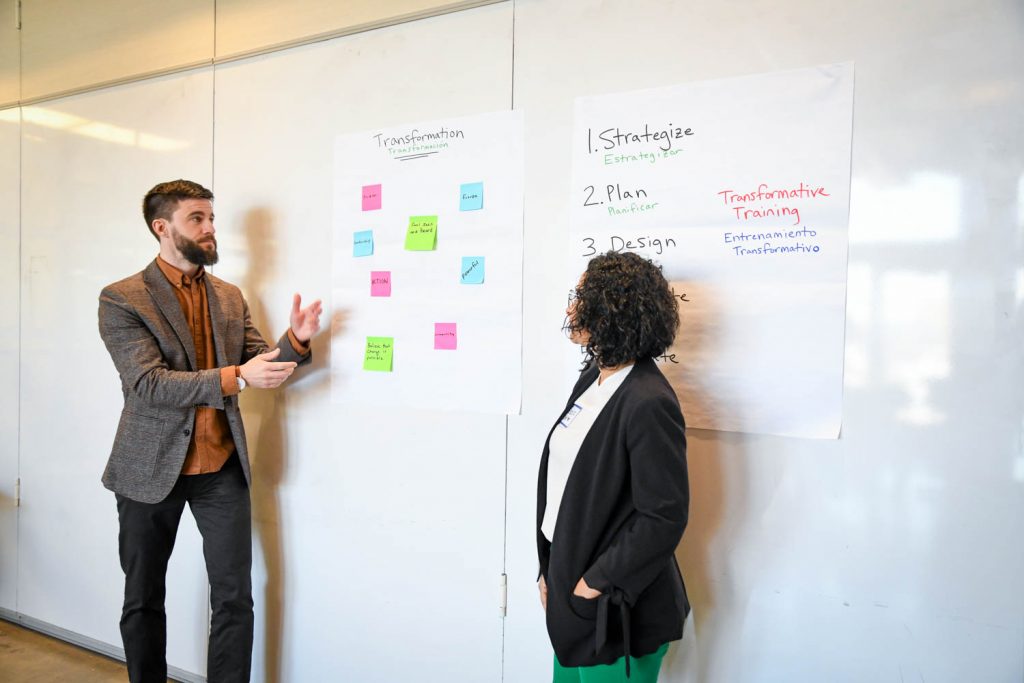“I feel triggered by what you just said.”
That was my boss near the end of a retreat I had organized to help our team set goals and a work plan for the year.
My stomach rose to my throat.
I’d worked so hard to pull this retreat together, but I still wasn’t getting what I wanted from my team.
“What I mean,” I said, “is that something’s still missing.”
The problem is that even after all this time and effort the team put into an off-site planning session, I couldn’t articulate what it was.
Looking back, I realize we had a solid list of activities—trainings to deliver, diversity targets to meet, partnerships to pursue—but we hadn’t defined what would change if we were successful.
Years later, I’ve seen how common this is across social change organizations.
We confuse doing more with accomplishing more.
So we spin our wheels trying to fix the wrong problem:
Not enough time? Hire more staff.
Not enough impact? Add more activities.
Not enough revenue? Apply for more grants.
Before long, we’re caught in a cycle of “never enough:” more funding demands more staff, demands more activities, demands more funding.
How do we know it’s working?
More than a decade later, partnering with teams of varying sizes, composition, and approaches to social change, I believe the problem isn’t effort. It’s alignment.
Even groups that appear very accomplished will sometimes struggle to define:
- The problem they solve,
- How they solve it, and
- For whom.
Once that clarity of purpose exists, activities can be evaluated based on whether they moved the needle toward transformation.
I think the indicators we use to track success can fit into five main categories.
- Generation – How many leads did we attract, and how well do they match our intended audience?
- Activation – How many took meaningful action toward our goal?
- Transformation – What observable impact did we have?
- Teamwork – How effectively did our team collaborate to execute the plan?
- Resources – How long can we operate effectively with our current funding mix?
Use the right set of activities to produce each of these results, and your impact grows.
Apply scattered activities without a clear purpose, and sooner or later, your team becomes overstretched, burnt out, and unsure where the next boost of resources will come from.
Why Training Is the Secret Lever
Now I don’t claim to have it figured all out. But after 15 years in the field, I feel certain that training plays a critical role in strategy.
Training is how you connect your purpose, your people, and your process.
When done right, it’s not just professional development—it’s how you:
- Evaluate what’s working,
- Cut what isn’t, and
- Align towards a long-term vision.
For example:
Suppose you want to generate sign-ups for new volunteers. You might host community events. But how effective are they?
If each event takes 40 staff hours and brings in 10 new quality contacts, that’s 4 hours per contact. Compare that to doorknocking, online petitions, or digital outreach—then identify your most resource-effective activity and train your team to replicate it.
Now you’re not just listing activities, you’re taking strategic action toward measurable results.
For each process, you can delegate or automate repeatable parts, freeing staff time while improving outcomes.
Training aligns purpose to improve performance and process.
The most effective organizations don’t do more activities—they do fewer, better.
Not All Training Is Equal
Some trainings are about launching entirely new systems or introducing useful ideas without a clear link to practice.
Those can provide inspiration and spark creativity—but lasting transformation is more likely to come from consistent action, not one-off inspiration.
The most powerful trainings provide inspiration for what’s possible, while also clarifying and replicating what already works.
Training Multiplies Leadership
We once worked with an organization to build a “training of trainers” program for racial solidarity.
The first year, staff delivered the training.
The next year, because they had documented systems and clear processes, they trained members to deliver it.
That one change:
- Saved staff time so they weren’t always the “doers,”
- Built members’ leadership and confidence, and
- Expanded the organization’s impact without expanding the budget.
In short, when you treat training as infrastructure for your strategy, you gain the ability to:
- Clarify your outcomes,
- Evaluate your activities, and
- Create processes that save time and multiply impact.
We’ve seen success applying this same framework to build volunteer bases, align coalitions, and develop staff capacity.
If you haven’t already, check out our list of free templates to build learning events tied to your strategy.





